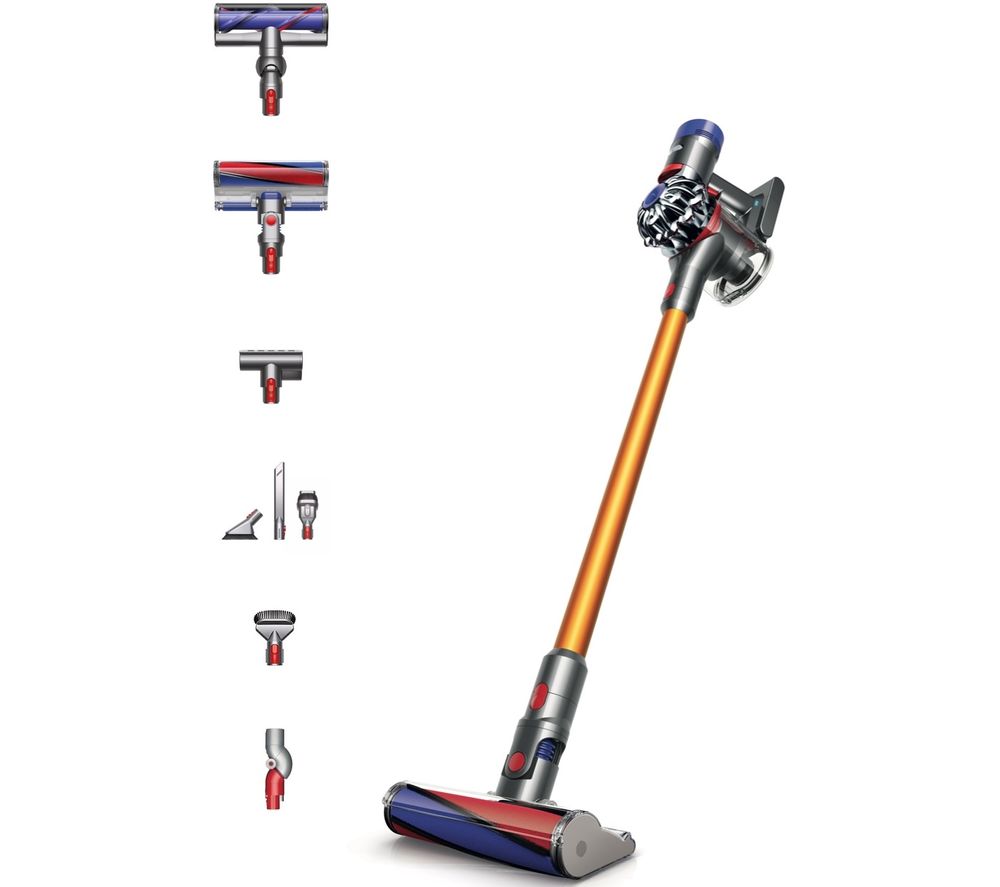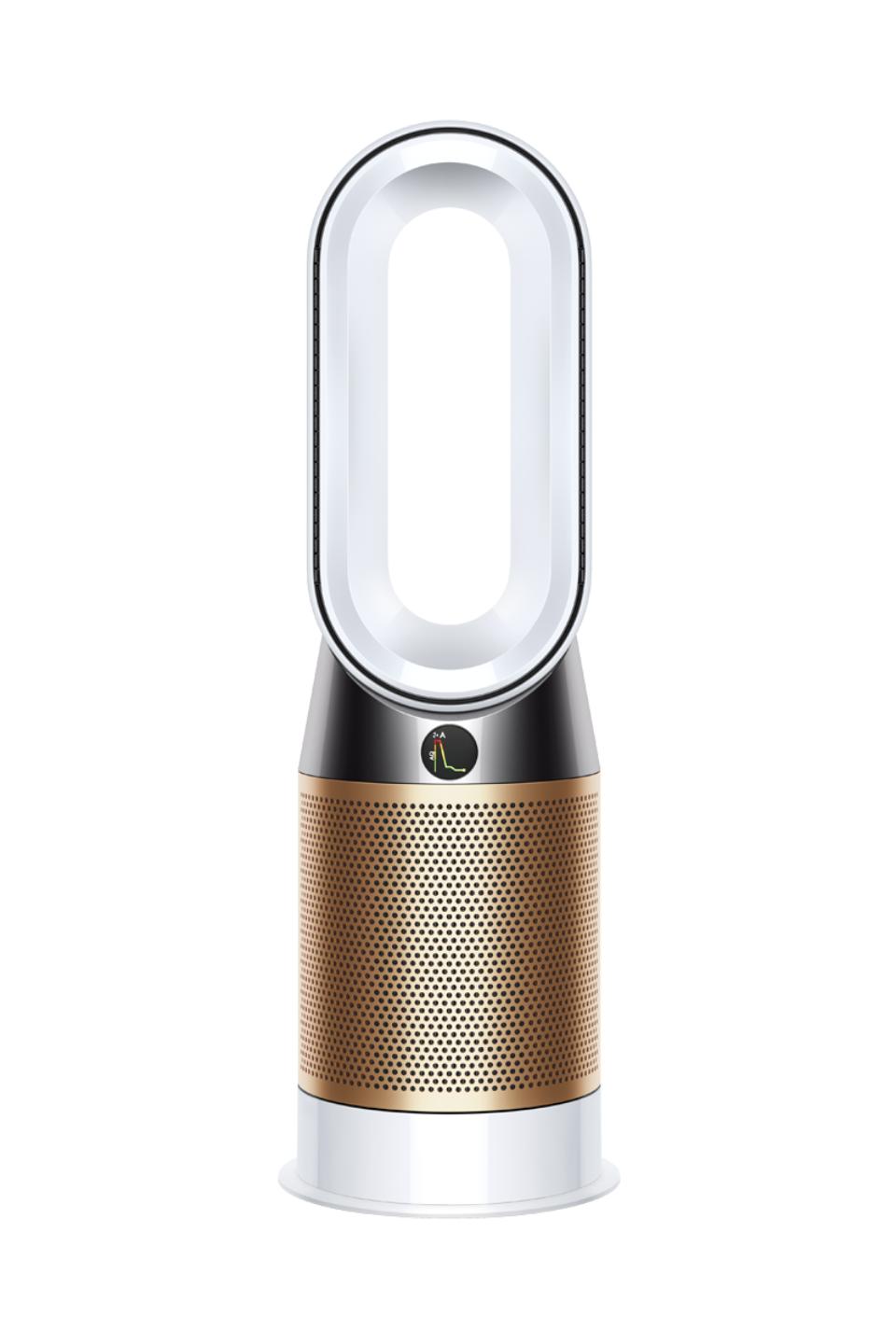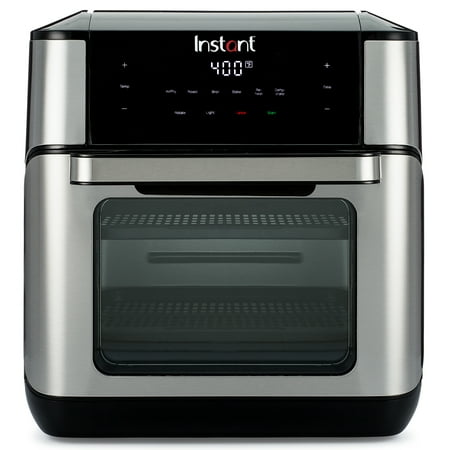DYSON V8 Absolute Extra Cordless Bagless Vacuum Cleaner – Nickel & Yellow
Powerful cordless vacuum with up to 40 minutes run time. 150% more brush bar power than V6 Animal. Converts to a handheld vacuum cleaner in seconds. Certified allergy & asthma friendly with hygienic dirt ejector. Additional hard floor head & motorised tool – ideal for all floor types.
Clean with confidence using the Dyson V8 Absolute Extra Cordless Bagless Vacuum Cleaner.
Cleaning performance
The V8 Absolute Extra is lightweight and easy to use, making cleaning surfaces effortless. A powerful motor inside the brush bar helps to achieve a deep clean into carpet surfaces, removing dirt and pet hair for a thorough clean.
It is not just fine dust and dirt that is targeted. The V8 Absolute Extra features a roller covered in soft woven nylon which helps to trap larger debris on the floor. Or use the stubborn dirt brush and power mode to get all the dirt out.
Convenient
For added convenience, the vacuum can also be covered into a handheld mode, ideal for dealing with stairs, desks and upholstery. It can also be used to clean the inside of your car efficiently, removing dirt from the footwells and the boot with minimum hassle. The new reach under tool lets you easily clean under funrniture.
A bin emptying mechanism works to hygienically drive out dust and debris without the need to touch it yourself.
Design
The cordless design makes it easy to use, with 40 minutes of cleaning possible from a full charge. The included docking station, which can be placed in a variety of positions, can be used to charge the vacuum in five hours.
Suitable for use on a variety of surfaces including carpets, hard floors, laminate and tiles, the lightweight design of the V8 Absolute Extra also means that it can be used to clean areas high up. By positioning the motor and battery near the handle, the vacuum is easy to manoeuvre.
Vacuum accessories
Clean even more surfaces throughout your home with a tool kit for your vacuum cleaner, or choose from one of the specialised floorheads in our range.
Enjoy cord-free, hassle-free cleaning with the Dyson V8 Absolute Extra Cordless Bagless Vacuum Cleaner in nickel and yellow.
Additional information
| Type | Cordless stick vacuum cleaner |
|---|---|
| Capacity | 0.54 litres |
| Appropriate power | 120 aW |
| Floor types | – Carpet |
| Cleaning width | 25 cm |
| Filter type | Lifetime washable filter |
| Battery type | Nickel-Cobalt-Aluminium battery |
| Power | 18.45 V – 29.4 V depending on mode |
| Run time | Up to 40 minutes |
| Charge time | 3.5 hours |
| Docking / charging station | Yes, wall mountable |
| Dimensions | 210 x 250 x 1243 mm (H x W x D) |
| Weight | 2.61 kg |






by Wendy
It is light and easy to use. As it is cordless it is quicker to vacuum carpets and floors.
Changing the attachments is quick and easy.
by Mike
Lightweight and easy to use.
by Susan
The easy bin emptying and the multi-position wand holder.
by Charlie
Cordless convenience, performance.
by Matthew
It’s almost perfect except the life of battery ( 60 min. Will be perfect for me) and missing the storage support .